The 2007 Philadelphia Wine Festival Wrap-Up

Belated congratulations to the PLCB and Philadelphia Magazine for successfully hosting the 2007 Philadelphia Wine Festival. This year’s festival had around 40 fewer vendors and was a little more expensive than last year. However, the festival’s central location at the Mariott Hotel in Center City, the food provided by DiBruno’s (including the quince paste covered cheese and the bruschetta with freshly-cut prosciutto) and the never-ending courtesy cups of spring water provided by Panna were all improvements that helped to make this year’s festival better than the last.
Here are some of the notable wines at the festival, with a few thoughts and surprises along the way.
The First Growth Bordeaux
This year there were three Bordeaux at the festival, all of which were First Growths: Chateau Haut Brion 2001, Chateau Margaux 2001 and Chateau Mouton Rothschild 2003. First Growths are considered to be among the best wines in the world. If you’re a wine enthusiast, it’s important to taste First Growths because they are the wines that Cabernet Sauvignon producers all around the world look to as their benchmark. Though young, these three wines drank like heaven and were not to be missed.
--Chateau Mouton Rothschild 2003 (PLCB No. 20296, $312.39): Aggressive, enamel-stripping tannins, but powerful, rich blackberry and cherry flavors lie underneath waiting to emerge; too young to be approachable now, but a treat to preview nonetheless.
--Chateau Margaux 2001 (PLCB No. 19342, $169.29): Flowery nose; softer and inviting; complex and nuanced structure of cassis, plum and dark berries systematically unfolding through a long finish.
--Chateau Haut Brion 2001 (PLCB No. 20098, $170.19): Grand and opulent; signature dark berries, cherries and spice; calculated and balanced structure with an endless finish.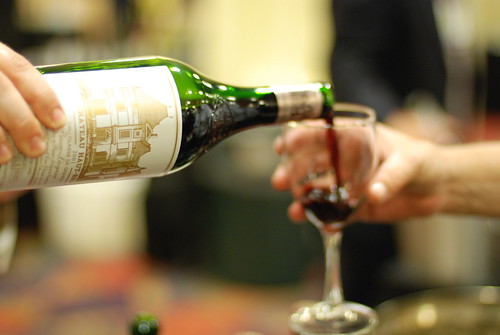
The First Growths, though, highlight an important issue about the festival’s pricing structure. Like past years, this year’s festival employed a two-tiered pricing system: the VIP Tasting, which cost $225 and began at 6:00 p.m.; and the Grand Tasting, which cost $125 and began at 7:30 p.m. In addition to getting an hour and a half head start, the VIPs also got to experience special Showcase wines at most of the tables, including all of the First Growth Bordeaux. The Grand Tasters, however, did not.
The two-tiered system is a double-edged sword. On one hand, it opens the event up to more people than festivals with one-tiered pricing systems such as this year’s Wine Spectator’s festival, which charged a flat $200 for everyone. On the other hand, one of the main reasons to go a wine festival (if not the main reason) is to taste the cream of the crop, wines you normally wouldn’t buy. That means the First Growths. To be fair, there were plenty of exciting wines at Philly’s festival for the Grand Tasters to enjoy. But it’s unfortunate that these three important wines were not poured for the Grand Tasters.
The Italian Wines
Italian wine lovers flocked to the Gaja table, which featured two wines: the Gaja Barbaresco 2001; and a Super Tuscan, the Ca’ Marcanda Magari 2004. The full-bodied Barbaresco had wonderfully soft tannins with notes of lilacs, strawberry and blackberry, while the Super Tuscan presented rich black currants, spice and a silky, round finish.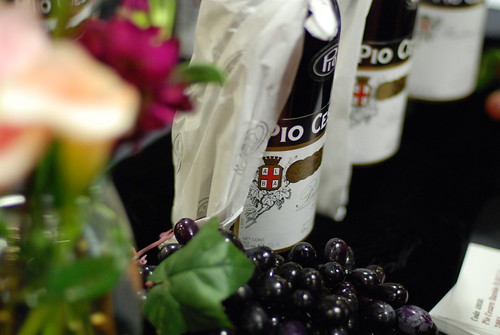
Directly adjacent to the Gaja table was Pio Cesare, which featured a Barolo D.O.C.G. 2001 (PLCB No. 4958, $49.99); and a Barbaresco D.O.C.G. 2000 (PLCB No. 23912, price not available), among others. The Barolo, while still a little closed off, was rich, silky and lingered for minutes. The Barbaresco had smooth tannins and revealed dried plum, earth and spice.
The Pennsylvania Wines
The Philly Wine Festival is always a great opportunity to check in with two local wineries, Blue Mountain and Chaddsford. Each winery produces a Meritage (sounds like heritage), an American version of a Bordeaux, both of which I’ve always found to be somewhat challenging. However, Blue Mountain and Chaddsford presented wines at this year’s festival that were exciting and surprising.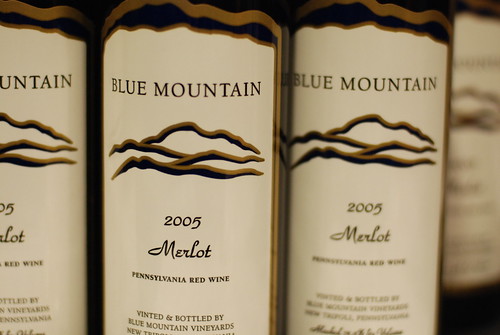
The wine Blue Mountain presented that piqued my interest was its 2005 Merlot. What’s exciting about this wine is that it is varietally correct. Don’t dismiss all Merlot because of one line of dialogue in Sideways, folks. If Merlot is not overly corrupted by the winemaker, it can taste and smell similar to Cabernet Sauvignon, which includes having Cab’s signature fingerprint of green peppers on the nose and palate. And Blue Mountain’s 2005 Merlot has that classic green pepper aroma and taste. It’s refreshing to see that Blue Mountain has the courage and skill to allow Merlot to be itself. Blue Mountain’s 2005 Merlot has not yet been formally released, but if you’re interested, you may still be able to snare a bottle of it at the Blue Mountain store in Reading Terminal Market. It has an $18 dollar price point.
The two Chaddsford wines that were the most interesting were the 2004 Due Rossi and the 2005 Pinot Noir. The Due Rossi is a 50/50 blend of Sangiovese and Barbera. This wine showed surprising structure and complexity with layers of wet earth, red berries, tobacco and coffee. The Due Rossi’s price point is in the $25 range. Chaddsford takes a subdued Old World approach in crafting its 2005 Pinot Noir. The nose did not have the intense fragrance of unswept barn and dried rose petals that is characteristic of Old World style Pinot Noirs, but the wine did have a welcomingly delicate and subtle palate.
The California Wines
PLCB Chairman Patrick J. Stapleton III may not have been a wine enthusiast prior to becoming Chairman earlier this year, but he apparently knows his stuff now. Shortly after arriving at the festival, Chairman Stapleton made his way to the Silver Oak table, where he enjoyed the Silver Oak Napa Valley Cabernet Sauvignon 2002 (PLCB No. 011663, $99.99).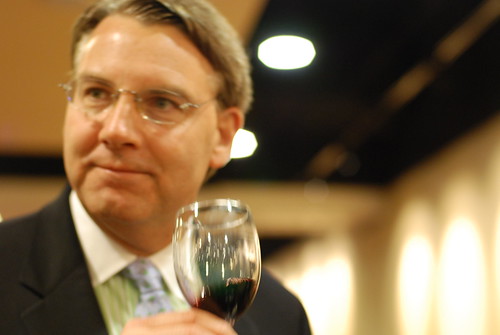
The nose on this wine was intense and evoked a very specific smell I experienced every August in my youth when my family and I would go camping in Bedford County—dense bramble and meadow after an early evening rain. But the palate—while full of the Silver Oak's familiar rich oak and dense, dark fruit—lacked some of the nuances of the 2001.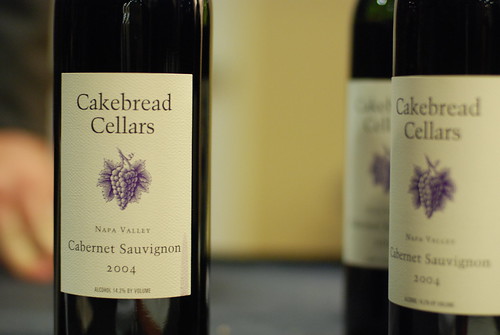
It’s hard to find a California Cab as plush and as fat as a Cakebread. Its 2004 Cabernet Sauvignon (PLCB No. 11705, $55.99) is no exception. A blend of 87% Cabernet Sauvignon, 12% Merlot, 1% Cabernet Franc, this soft and chewy wine was bursting with rich dark fruit, spice and caramely oak. It’s not the shyest of pours, to be sure, but that’s part of the fun.
There was another enjoyable Cab at the festival that had an impressive flavor profile for its price point. But because I have other plans for this wine, I’ll save the discussion for another day, closer to the end of the month.
Again, cheers to the PLCB and Philadelphia Magazine for hosting a successful event. For more pics, go to the 2007 Philly Wine Festival set on my Flickr page.












No comments:
Post a Comment